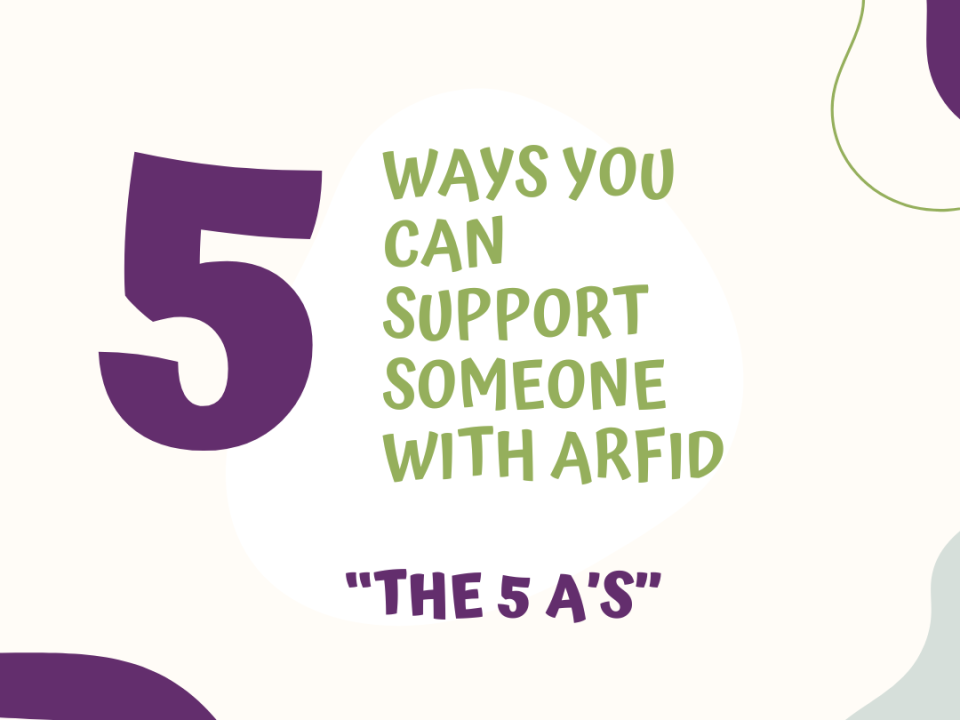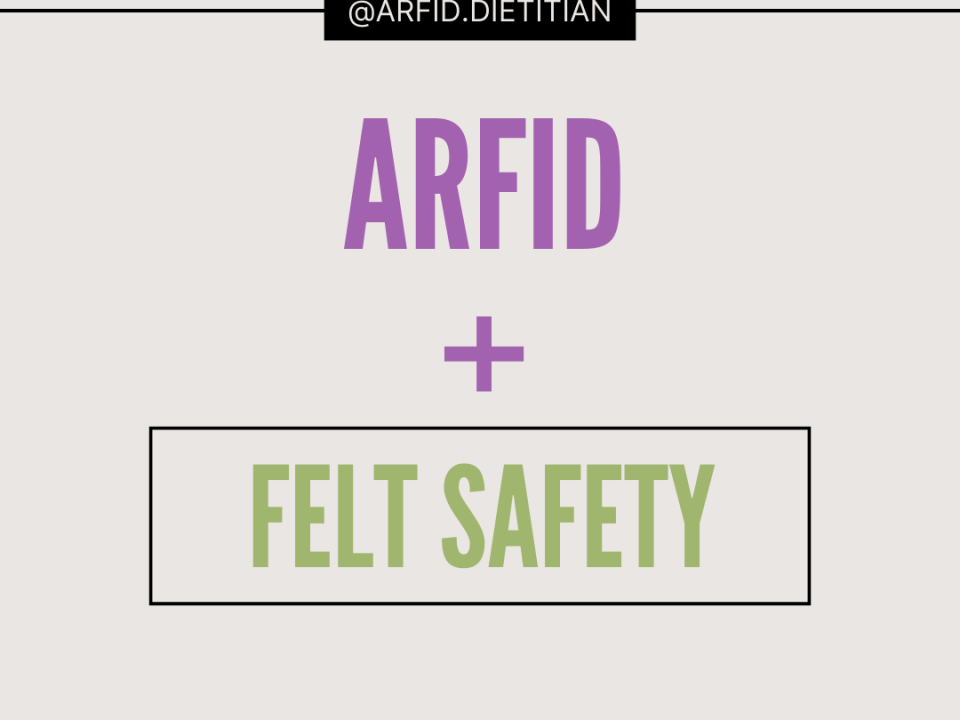Food Exposure Therapy for ARFID and When is Appropriate?

The Intersection Between ARFID and Neurodiversity
August 30, 2022Supporting your Loved One with ARFID During the Holidays
November 15, 2022One way in which I work with clients to help them increase their preferred foods and find food freedom is through food exposures. But this is very often the last step! The most important thing is that the individual is well nourished and ready/internally motivated to try new foods. If either of these are not present exposure therapy is often not effective. But we can get there!
What is Food Exposure Therapy?
Exposure therapy is a psychological treatment to help individuals confront fears, in this case feared foods or eating. Individuals with ARFID often have associated fears and anxiety around eating specific foods or eating new foods related to past trauma. Avoidance is the brains way to protect individuals from feared experiences around food/eating ( i.e choking, gagging, vomiting, allergic reaction, overstimulation/sensory overload etc.). This avoidance often leads to increased anxiety and reduced number of accepted foods.
There are multiple types of exposure therapy. The most commonly used in food exposure therapy include in vivo exposures ( in real life), and imaginal exposures (vividly imagine exposure) which is often used prior to real life exposures. Exposure therapy is aimed to help the brain make positive associations with foods (instead of negative) to help reduce and potentially remove fear/anxiety around eating new or non-preferred foods.
Assessing if Food Exposure Therapy is Appropriate
- Is nourishment adequate? Whether it be from food, or an oral or enteral supplement. It’s difficult to add or try new things when you are not getting in enough nourishment. Starting too soon can cause increased anxiety, and actually cause more foods to fall off the “safe” or “preferred” food list. If you are not adequately nourished there is often a low interest in trying new foods.
- Is there internal motivation (intrinsic desire) to try new foods/beverages? If/when you or your child is adequately nourished the next question to ask is, is there an intrinsic desire to try new foods? Does the individual want to try new foods? If this is not present it can also be difficult for exposure therapy to be successful.
Internal signs you/your child is ready for food exposure therapy
- Verbally expressing interest in trying new food
- asking to cook/make something they see
- less anxiety around food/eating.
- “craving” a specific food
- internal desire to be able to eat a food. YOU want to do it! It’s not an idea or thought heard from someone else.
Top Considerations when Selecting Foods for Exposures
If you/your child is able to eat enough to nourish themselves for normal growth and development and are showing intrinsic desire to eat more foods here are some considerations for selecting foods for exposures.
- Sensory Preferences:Identify textures, tastes, colors, smells and temperatures of food you prefer. Do any foods intrigue you visually? (i.e a food you have seen in a picture/video)
- Foods You Used to Enjoy/Eat: What were foods you used to eat but haven’t eaten recently?
- Access: What foods can you easily access?
- Affordability: What foods can you afford?
- Culture: What foods are part of your culture or connect you to people who are close to you?
- Values: What do you value? (i.e being able to eat out at a restaurant with friends? Being able to sit down to a meal with family and eat a similar meal together?)
What if someone is deficient in a specific nutrient in their diet?
For these cases a vitamin or oral nutrition supplement is an extremely important part of care. Then we can work on finding a food containing the nutrient for an exposure using the considerations above. A specific nutrient ( i.e iron or calcium etc) can be found in many different foods!
Foods not to start with
- Foods you have tried and did not like (from a sensory preference)
- Foods that someone else “wants” you to eat
- Foods you think you “should” eat (often externally motivated)
- Foods that may not fit your sensory preferences
- Foods that you don’t have access to or difficult to access
What’s the Goal of Food Exposure Therapy?
The goal is to discover new foods that you accept/tolerate, find more foods you enjoy, and decrease anxiety around trying new foods. The goal isn’t to like or even tolerate all foods, just more than you are now.
What to do After an Exposure?
Keep a list of foods you like, tolerate and don’t like to refer back to. Yes not every food you try you will end up liking at that is ok. Keep including the foods you identify as liking or tolerating consistently in your diet. One exposure doesn’t automatically make it a safe, preferred or tolerated food. Multiple exposure are required to help reduce anxiety, get you used to the taste/texture and allow your brain to make a solid positive association with the new or re-introduced food(s).
Biggest Mistakes in Food Exposure Therapy?
- Doing exposures before you are well nourished or ready to try new foods
- Doing too many exposures at one time
- Doing exposures to foods someone else wants you to do, not you
- Not repeating exposures multiple times or including new foods consistently into diet
For many individuals and parents of kids with ARFID they want a quick “fix” but this is not often realistic. Positive and effective therapy takes time. And as mentioned above exposure therapy is often not the first step in treatment and can take time to get to a place where you are nourished and ready to try new foods. That’s ok! Going at a pace that feels right for you is most important in creating progress over time.
Unsure if you or your loved one is ready for Food Exposure Therapy? Want help getting to a place where you or your loved one is ready for Food Exposure Therapy? Schedule a FREE Discovery Call to see if we would be a good fit!
Want to learn more about ARFID or how a dietitian can help someone with ARFID? Click here!



